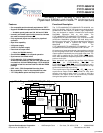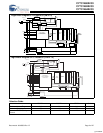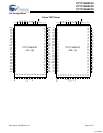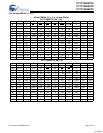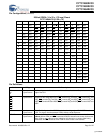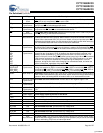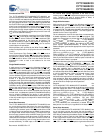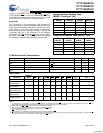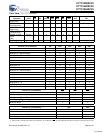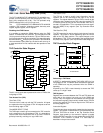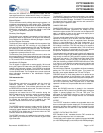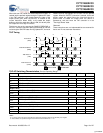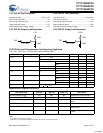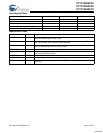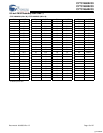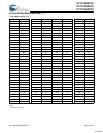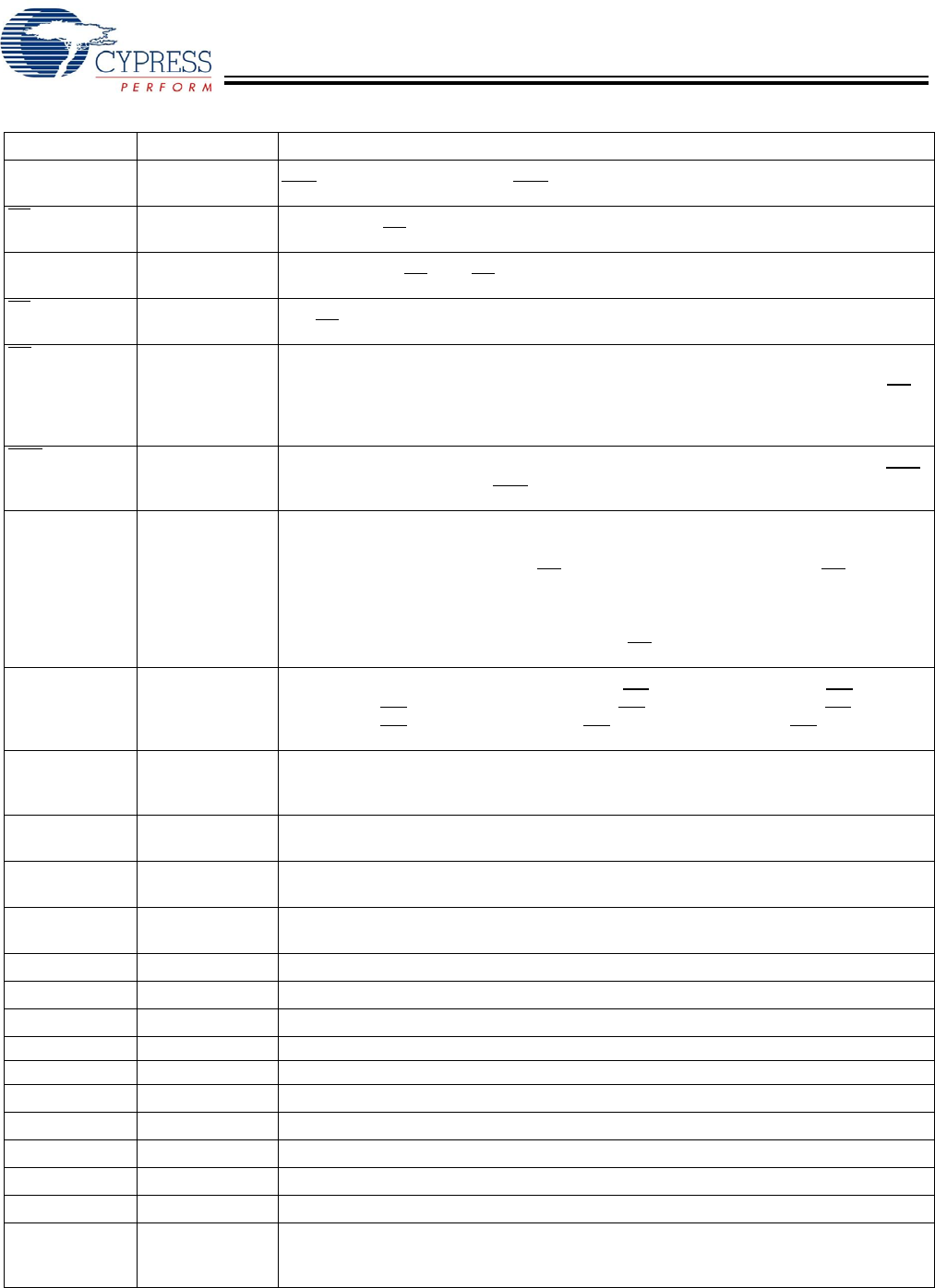
CY7C1460AV33
CY7C1462AV33
CY7C1464AV33
Document #: 38-05353 Rev. *D Page 6 of 27
CLK Input-
Clock
Clock Input. Used to capture all synchronous inputs to the device. CLK is qualified with
CEN
. CLK is only recognized if CEN is active LOW.
CE
1
Input-
Synchronous
Chip Enable 1 Input, active LOW. Sampled on the rising edge of CLK. Used in conjunction
with CE
2
and CE
3
to select/deselect the device.
CE
2
Input-
Synchronous
Chip Enable 2 Input, active HIGH. Sampled on the rising edge of CLK. Used in
conjunction with CE
1
and CE
3
to select/deselect the device.
CE
3
Input-
Synchronous
Chip Enable 3 Input, active LOW. Sampled on the rising edge of CLK. Used in conjunction
with CE
1
and
CE
2
to select/deselect the device.
OE
Input-
Asynchronous
Output Enable, active LOW. Combined with the synchronous logic block inside the device
to control the direction of the I/O pins. When LOW, the I/O pins are allowed to behave as
outputs. When deasserted HIGH, I/O pins are tri-stated, and act as input data pins. OE
is
masked during the data portion of a write sequence, during the first clock when emerging
from a deselected state and when the device has been deselected.
CEN
Input-
Synchronous
Clock Enable Input, active LOW. When asserted LOW the clock signal is recognized by
the SRAM. When deasserted HIGH the clock signal is masked. Since deasserting CEN
does not deselect the device, CEN
can be used to extend the previous cycle when required.
DQ
a
DQ
b
DQ
c
DQ
d
DQ
e
DQ
f
DQ
g
DQ
h
I/O-
Synchronous
Bidirectional Data I/O lines. As inputs, they feed into an on-chip data register that is
triggered by the rising edge of CLK. As outputs, they deliver the data contained in the
memory location specified by A
X
during the previous clock rise of the read cycle. The
direction of the pins is controlled by OE
and the internal control logic. When OE is asserted
LOW, the pins can behave as outputs. When HIGH, DQ
a
–DQ
d
are placed in a tri-state
condition. The outputs are automatically tri-stated during the data portion of a write
sequence, during the first clock when emerging from a deselected state, and when the
device is deselected, regardless of the state of OE
.
DQP
a,
DQP
b,
DQP
c,
DQP
d
DQP
e,
DQP
f
DQP
g,
DQP
h
I/O-
Synchronous
Bidirectional Data Parity I/O lines. Functionally, these signals are identical to DQ
[31:0]
.
During write sequences, DQP
a
is controlled by BW
a
, DQP
b
is controlled by BW
b
, DQP
c
is
controlled by BW
c
, and DQP
d
is controlled by BW
d
, DQP
e
is controlled by BW
e
, DQP
f
is
controlled by BW
f
, DQP
g
is controlled by BW
g
, DQP
h
is controlled by BW
h
.
MODE Input Strap Pin Mode Input. Selects the burst order of the device. Tied HIGH selects the interleaved burst
order. Pulled LOW selects the linear burst order. MODE should not change states during
operation. When left floating MODE will default HIGH, to an interleaved burst order.
TDO JTAG serial output
Synchronous
Serial data-out to the JTAG circuit. Delivers data on the negative edge of TCK.
TDI JTAG serial input
Synchronous
Serial data-In to the JTAG circuit. Sampled on the rising edge of TCK.
TMS Test Mode Select
Synchronous
This pin controls the Test Access Port state machine. Sampled on the rising edge of
TCK.
TCK JTAG-Clock Clock input to the JTAG circuitry.
V
DD
Power Supply Power supply inputs to the core of the device.
V
DDQ
I/O Power Supply Power supply for the I/O circuitry.
V
SS
Ground Ground for the device. Should be connected to ground of the system.
NC N/A No connects. This pin is not connected to the die.
NC/72M N/A Not connected to the die. Can be tied to any voltage level.
NC/144M N/A Not connected to the die. Can be tied to any voltage level.
NC/288M N/A Not connected to the die. Can be tied to any voltage level.
NC/576M N/A Not connected to the die. Can be tied to any voltage level.
NC/1G N/A Not connected to the die. Can be tied to any voltage level.
ZZ Input-
Asynchronous
ZZ “sleep” Input. This active HIGH input places the device in a non-time critical “sleep”
condition with data integrity preserved. During normal operation, this pin can be connected
to V
SS
or left floating. ZZ pin has an internal pull-down.
Pin Definitions (continued)
Pin Name I/O Type Pin Description
[+] Feedback



